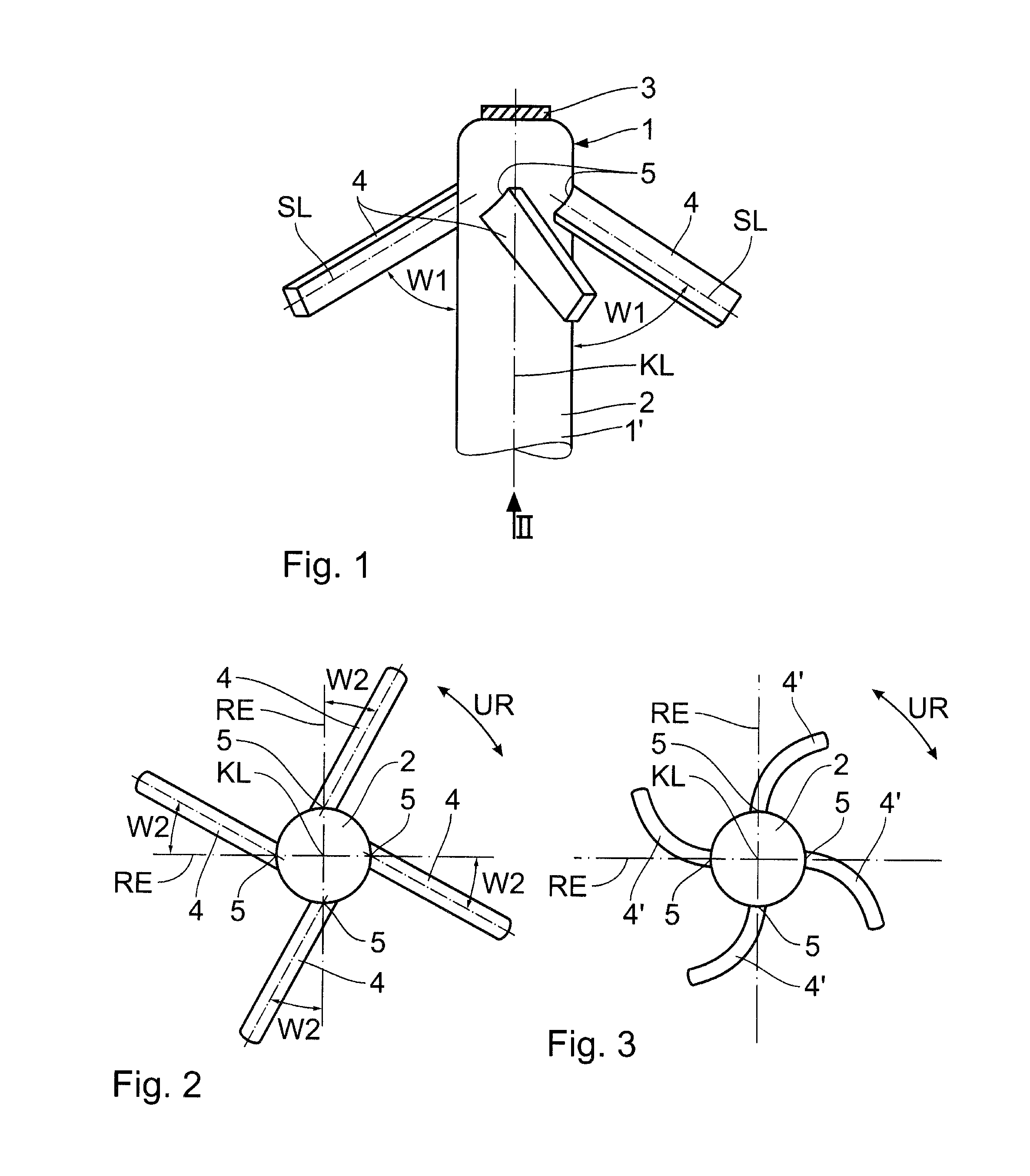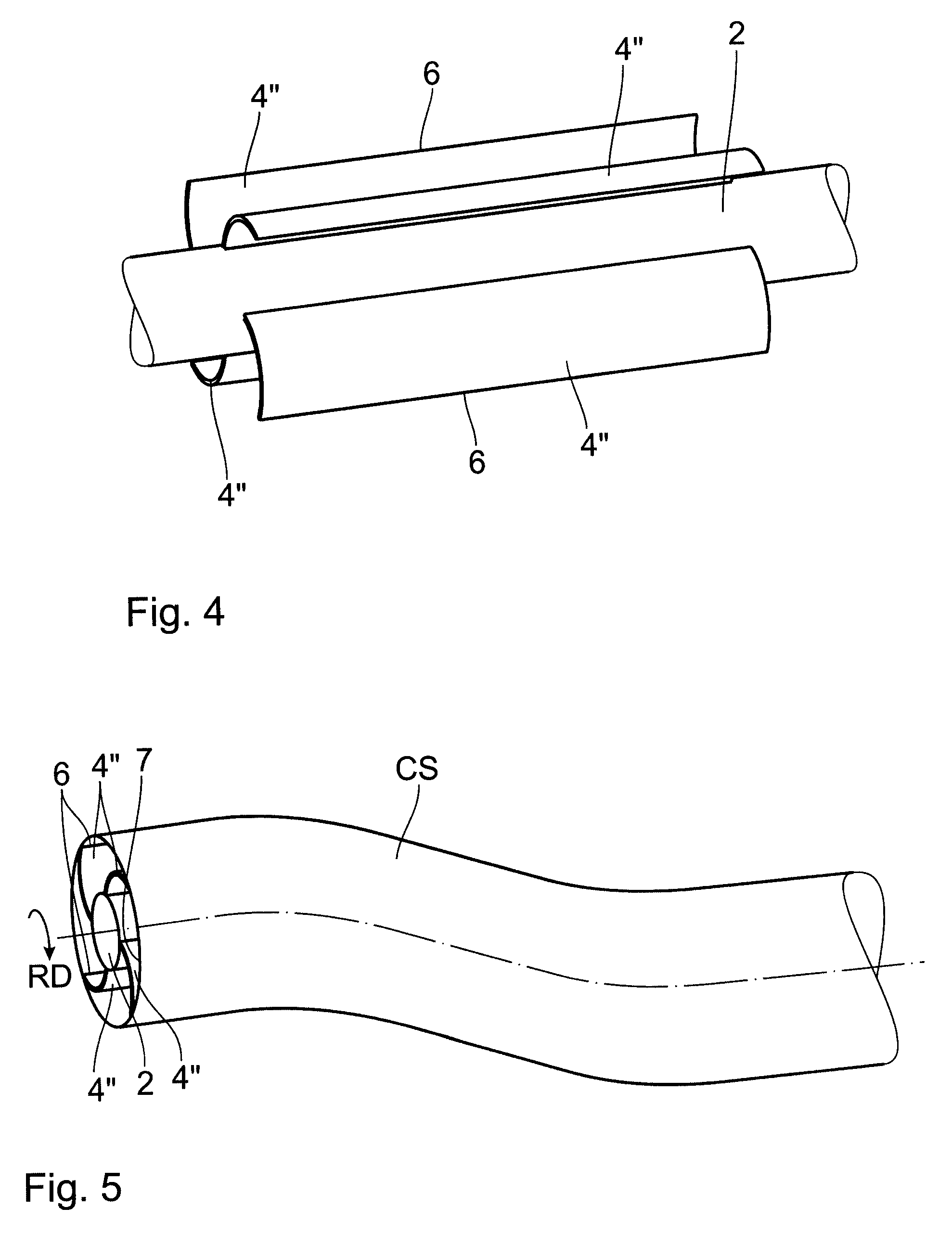Implantable medical electrode device
a medical electrode and implantable technology, applied in the field of medical devices and implantable electrode devices, can solve the problems of complex construction, prone to breakdown, and snags of anchoring elements on other body structures,
- Summary
- Abstract
- Description
- Claims
- Application Information
AI Technical Summary
Benefits of technology
Problems solved by technology
Method used
Image
Examples
Embodiment Construction
[0017]The two illustrations in FIGS. 1 and 2 show the distal end of 1 of an electrode body 2 of a cardiac catheter which is to be anchored in the trabeculae in the ventricle of the heart, for example. A cardiological potential may be measured and / or a voltage pulse may be delivered via the tip electrode 3 shown in FIG. 1, for example, if the cardiac catheter is used with a cardiac pacemaker.
[0018]To anchor the distal end 1 having its tip electrode 3, laterally projecting anchoring struts distributed around the circumference, which are made of an elastic plastic material—such as silicone—are injection molded directly onto the electrode body 2 before the end. These anchoring struts 4 project with their longitudinal axis SL at an acute angle W1, of 60 degrees for example, opening in the direction of the proximal end (approximated at 1′) to the body longitudinal axis KL of the electrode body 2. As may be seen in FIG. 1 and more clearly in FIG. 2, the four anchoring struts 4 are addition...
PUM
 Login to View More
Login to View More Abstract
Description
Claims
Application Information
 Login to View More
Login to View More - R&D
- Intellectual Property
- Life Sciences
- Materials
- Tech Scout
- Unparalleled Data Quality
- Higher Quality Content
- 60% Fewer Hallucinations
Browse by: Latest US Patents, China's latest patents, Technical Efficacy Thesaurus, Application Domain, Technology Topic, Popular Technical Reports.
© 2025 PatSnap. All rights reserved.Legal|Privacy policy|Modern Slavery Act Transparency Statement|Sitemap|About US| Contact US: help@patsnap.com



